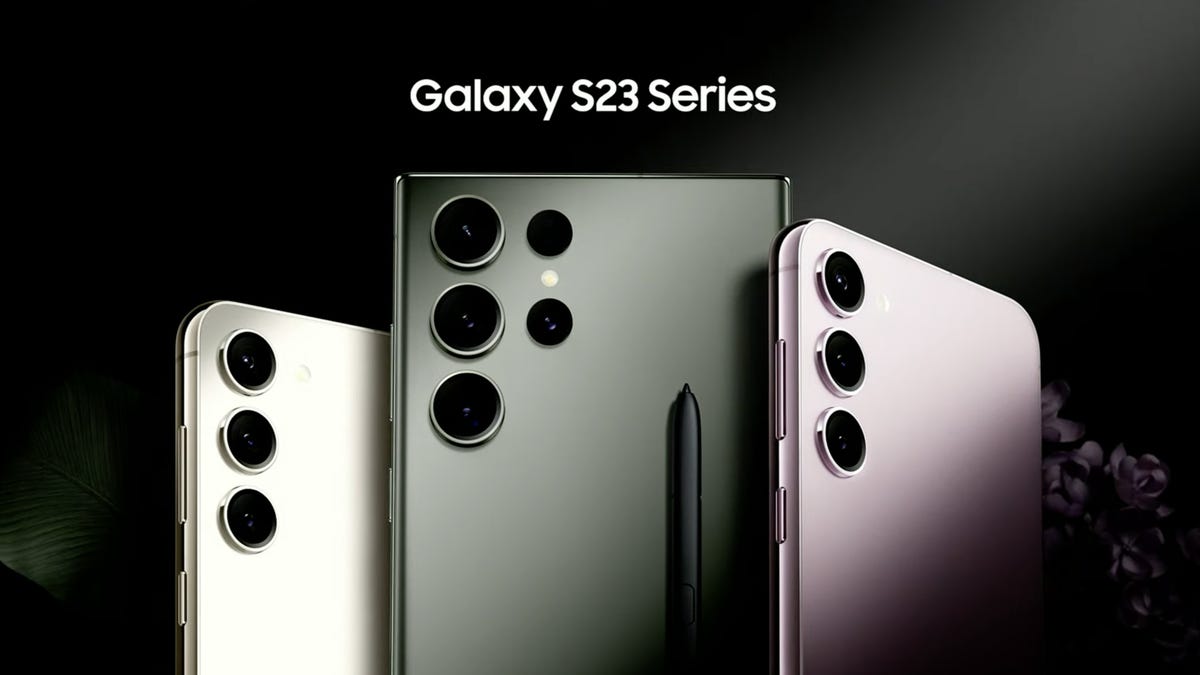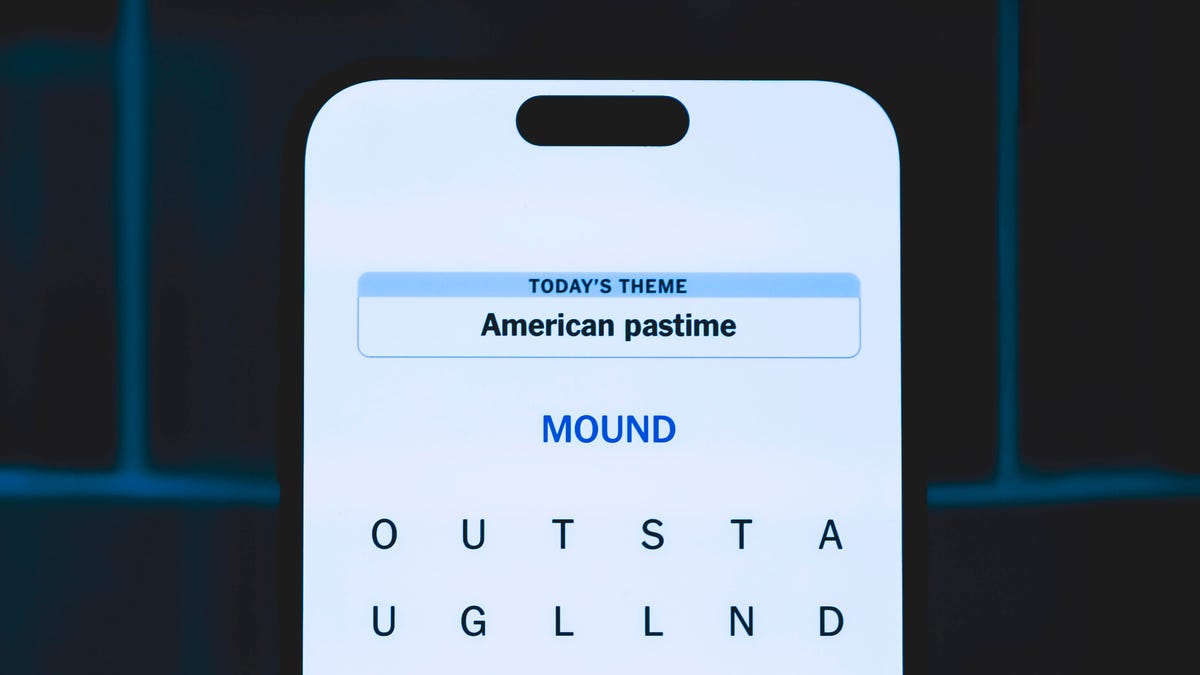Technologies
Samsung Unpacked Recap: Everything Announced, From Galaxy S23 to Galaxy Book 3 Ultra
Here’s everything you might’ve missed from Samsung’s February Unpacked event.

This story is part of Samsung Event, CNET’s collection of news, tips and advice around Samsung’s most popular products.
Samsung’s semiannual Unpacked event was held in San Francisco on Wednesday, and a collection of new phones and laptops made their debut. Samsung launched the refresh of its flagship Galaxy S line of phones — the Galaxy S23, S23 Plus and S23 Ultra. The company also unveiled its upgraded Galaxy Book Pro laptops, the Book 3 Pro and Book 3 Pro 360, along with a new high-end sibling for the family, the Book 3 Ultra.
Along with the new products, Samsung, Google and Qualcomm announced a partnership to develop a mixed-reality platform. It was heavy on words but light on details, however.
You can also check out our archived live blog from the event if you feel more like reading a play-by-play.
Galaxy phones
All the new phones have been upgraded to the latest generation Qualcomm Snapdragon 8 Gen 2 chip «for Galaxy» — a custom version of the processor that the companies have theoretically optimized for faster performance, better graphics with ray tracing and faster AI processing.
The chip enables more enhancements to the phones’ computational photography capabilities, such as improved low-light performance and more intelligent processing for selfies. That front camera has been normalized across the product line as well, a resolution increase from the S22 and S22 Plus’ 10 megapixels but a drop from the S22 Ultra’s 40 megapixels. Improved speed also allows for 120 frames-per-second recording of 1080p for slow motion, up from 60fps, which should produce better results.
Samsung has also introduced syncing between Adobe Photoshop Lightroom and Samsung PCs with this generation.
Galaxy S23 Ultra
Since the design remains relatively unchanged, the biggest (literally) update to the top-of-the-line S23 Ultra is the new 200-megapixel camera using the Isocell HP2 sensor — roughly double the resolution of its predecessor, the Galaxy S22 Ultra. It can also pixel-bin in four- or 16-pixel blocks for smaller images with better tonal quality or other, lower resolutions for easier-to-handle file sizes.
The new sensor is also responsible for improvements. Most notably, it has larger wells in the pixels to be able to absorb more light, which can make photos and video better across the board.
Other camera improvements include better optical image stabilization, and video gains wider-angle shooting and 8K at 30fps (up from 24fps). Samsung’s own camera software integrates better with the native camera app as well.
New colors abound: Now it’s available in black, cream, green and lavender. Samsung also says it has increased the use of ocean-bound plastics and preconsumer waste, too.
Pricing for the phone begins at $1,200 ( 1,249, AU$1,949). It’s shipping Feb. 17; preorders have already begun.
Galaxy S23 and S23 Plus
The outsides of the base model and larger step-up model are largely unchanged.
Both phones get a 200-mAh boost for the battery, upping to 3,900 mAh for the S23 and 4,700 mAh for the S23 Plus. The Plus has a higher entry storage capacity, now 256GB.
The Galaxy S23 starts at $800 ( 849, AU$1,349), while the S23 Plus begins at $1,000 ( 1,049, AU$1,649). You can preorder them now, and they’re slated to ship on Feb. 17.
Galaxy Book 3 Ultra
Without discrete graphics or a high-end processor, Samsung’s Pro models of its laptops didn’t really feel «pro.» So now there’s the new Galaxy Book 3 Ultra, with either an Nvidia GeForce RTX 4050 or 4070 GPU and up to a 13th-gen Core i9 CPU to at least add the option to Samsung’s offerings.
Other features include a 16:10, 2,880×1,800-pixel OLED display that supports 120Hz refresh rate; a 1080p webcam; a quad-speaker audio system; and more ports than the Galaxy Book 2 Pro, with a USB-A port and HDMI 2.0 output joining its two Thunderbolt USB-C ports, microSD card slot and headphone jack. It’s a bit on the heftier side for its family at 16.5 mm thick and 4 pounds (1.8kg).
The Core i7 and RTX 4050 configuration starts at $2,400; the Core i9/RTX 4070 model is going for $3,000. UK and Australian prices weren’t immediately available.
Galaxy Book 3 Pro and Pro 360
The 16-inch, 16:10 screens and upgraded camera, audio and port configurations also come to the clamshell and two-in-one down-line models. The Galaxy Book 3 Pro is 4mm thinner and about 8 ounces lighter than the Ultra. It also comes in a 14-inch model that weighs 2.6 pounds (1.2 kilograms).
The 16-inch Galaxy Book 3 Pro 360 two-in-one comes with one of Samsung’s excellent S Pens, and it’s also the only model to come with optional 5G wireless.
The Samsung Galaxy Book 3 Ultra and Pro and Pro 360 laptops are available to preorder now through Samsung’s site and the Pro models are expected to start shipping on Feb. 17.
Technologies
Today’s NYT Strands Hints, Answers and Help for Dec. 5 #642
Here are hints and answers for the NYT Strands puzzle for Dec. 5, No. 642.

Looking for the most recent Strands answer? Click here for our daily Strands hints, as well as our daily answers and hints for The New York Times Mini Crossword, Wordle, Connections and Connections: Sports Edition puzzles.
Today’s NYT Strands puzzle is a fun one, and the theme is interesting. Some of the answers are difficult to unscramble, so if you need hints and answers, read on.
I go into depth about the rules for Strands in this story.
If you’re looking for today’s Wordle, Connections and Mini Crossword answers, you can visit CNET’s NYT puzzle hints page.
Read more: NYT Connections Turns 1: These Are the 5 Toughest Puzzles So Far
Hint for today’s Strands puzzle
Today’s Strands theme is: Feeling peckish?
If that doesn’t help you, here’s a clue: Can I see a menu?
Clue words to unlock in-game hints
Your goal is to find hidden words that fit the puzzle’s theme. If you’re stuck, find any words you can. Every time you find three words of four letters or more, Strands will reveal one of the theme words. These are the words I used to get those hints but any words of four or more letters that you find will work:
- BAKE, BAKER, BONE, BONES, SIRS, FUNS, FACT, BUTT, DIET, DIETS, GREW, STEW, GOUT, DINE, NEST, NETS, TEAK
Answers for today’s Strands puzzle
These are the answers that tie into the theme. The goal of the puzzle is to find them all, including the spangram, a theme word that reaches from one side of the puzzle to the other. When you have all of them (I originally thought there were always eight but learned that the number can vary), every letter on the board will be used. Here are the nonspangram answers:
- BAKERY, CAFE, BISTRO, BUFFET, BREWERY, STEAKHOUSE
Today’s Strands spangram
Today’s Strands spangram is DININGOUT. To find it, start with the D that is three letters to the right on the top row, and wind down.
Don’t miss any of our unbiased tech content and lab-based reviews. Add CNET as a preferred Google source.
Technologies
Today’s NYT Mini Crossword Answers for Friday, Dec. 5
Here are the answers for The New York Times Mini Crossword for Dec. 5.

Looking for the most recent Mini Crossword answer? Click here for today’s Mini Crossword hints, as well as our daily answers and hints for The New York Times Wordle, Strands, Connections and Connections: Sports Edition puzzles.
Need some help with today’s Mini Crossword? Three of the clues involve a now-infamous Gen Z/Gen Alpha joke, so you might want to have a young person nearby. Read on. And if you could use some hints and guidance for daily solving, check out our Mini Crossword tips.
If you’re looking for today’s Wordle, Connections, Connections: Sports Edition and Strands answers, you can visit CNET’s NYT puzzle hints page.
Read more: Tips and Tricks for Solving The New York Times Mini Crossword
Let’s get to those Mini Crossword clues and answers.
Mini across clues and answers
1A clue: Beaver’s building project
Answer: DAM
4A clue: Unit of distance originally equivalent to 1,000 paces
Answer: MILE
5A clue: Number of dwarfs or deadly sins
Answer: SEVEN
6A clue: Extra-large film format
Answer: IMAX
7A clue: Crosses (out)
Answer: XES
Mini down clues and answers
1D clue: Difficult-to-work-with stars
Answer: DIVAS
2D clue: U.S. soccer star ___ Morgan
Answer: ALEX
3D clue: Roughly half of the adult population
Answer: MEN
4D clue: 5-Down-5-Across, for one
Answer: MEME
5D clue: Broadway musical about the wives of Henry VIII
Answer: SIX
Don’t miss any of our unbiased tech content and lab-based reviews. Add CNET as a preferred Google source.
Technologies
The Mystery of the iPhone 17 Pro’s Missing Night Mode for Portraits
Is it a bug? Is it a technical issue? Or did Apple just yank a camera feature that wasn’t popular?

It’s a mystery. Night mode isn’t available in Portrait Mode on the iPhone 17 Pro, and no one seems to know why. Yet.
Night mode automatically brightens photos and captures more details, even in low-light conditions. You can adjust the exposure time manually. In Portrait mode, the camera focuses sharply on the subject you’re snapping and blurs the background, creating a depth-of-field effect.
The first clue that Night mode for Portrait mode was gone came from an Apple support document titled Take Night mode photos with your iPhone camera. It states what many iPhone aficionados already know: «Night mode automatically brightens photos and captures more detail in low light.»
Don’t miss any of our unbiased tech content and lab-based reviews. Add CNET as a preferred Google source.
Night mode for the iPhone 17 Pro is listed in two separate parts of the iPhone online user guide (here and also here) for selfies and time-lapse photos. But it isn’t included on the guide’s list for snapping Night mode photos in Portrait mode. The feature is still available on iPhone Pro and Pro Max on the 12, 13, 14, 15 and 16 series.
Upon investigation, CNET staffers verified that, indeed, Night mode is no longer an option in Portrait mode with the iPhone 17 Pro.
An Apple representative didn’t immediately respond to a request for comment.
When the iPhone 17 Pro was launched in September, Andrew Lanxon, CNET’s lead photographer in Europe, was impressed by the camera upgrades over the iPhone 16 Pro, including optical zoom that doubled to 8x, a telephoto camera sensor 56% larger than before and 48 megapixels of resolution.
Lanxon, a professional photographer and YouTuber, was excited to get shooting with the iPhone 17 Pro. But apparently, he will have to do without Night mode in Portrait mode.
Why did Apple do it?
Why was Night mode removed? «There doesn’t appear to be a hardware reason for it,» said CNET senior writer Jeff Carlson. «The Lidar camera that helps with low-light focusing and depth perception is still there. Perhaps it’s a software issue, but as of the iOS 26.2 release candidate, the feature isn’t present.»
Carlson found it curious that it’s taken three months since the launch of the new pro model before people noticed that it’s missing. He speculates that the feature was possibly removed because it «wasn’t being used and Apple could devote other processing resources elsewhere,» he said. «Perhaps something broke in the development of the new operating system and revamped Camera app, and it hasn’t been a high enough priority to fix in the regular release schedule.
«People have gotten used to having iPhone models that enable shots that are otherwise difficult for smartphone cameras, especially on a flagship like the iPhone 17 Pro,» Carlson said. «I hope the feature returns to give everyone the most control over the photos they capture.»
One parallel might be what Samsung did earlier this year — removing S Pen Bluetooth connectivity on the new S25 Ultra. Samsung said they removed the feature because not many people were using it. Is Apple doing the same thing with Night mode for portraits?
Some people miss it, some don’t
A subreddit on the topic appeared to be a mix of «who cares» and «oh darn.» Redditor kaoss_pad was «low key happy» that the feature had vanished, saying that «it would often surprise me and activate when I didn’t want it and ruin a moment.»
Some Redditors weren’t even aware of the feature. CultofCedar posted, «lol didn’t even notice that wasn’t a thing,» and Successful-Cover5433 wrote, «I didn’t even know you could.»
A couple of folks weren’t happy about the mysterious disappearance, including nsfdrag, who posted, «Kind of a bummer, I like the feature.»
-

 Technologies3 года ago
Technologies3 года agoTech Companies Need to Be Held Accountable for Security, Experts Say
-

 Technologies3 года ago
Technologies3 года agoBest Handheld Game Console in 2023
-

 Technologies3 года ago
Technologies3 года agoTighten Up Your VR Game With the Best Head Straps for Quest 2
-

 Technologies4 года ago
Technologies4 года agoBlack Friday 2021: The best deals on TVs, headphones, kitchenware, and more
-

 Technologies4 года ago
Technologies4 года agoVerum, Wickr and Threema: next generation secured messengers
-

 Technologies4 года ago
Technologies4 года agoGoogle to require vaccinations as Silicon Valley rethinks return-to-office policies
-

 Technologies4 года ago
Technologies4 года agoOlivia Harlan Dekker for Verum Messenger
-

 Technologies4 года ago
Technologies4 года agoiPhone 13 event: How to watch Apple’s big announcement tomorrow
